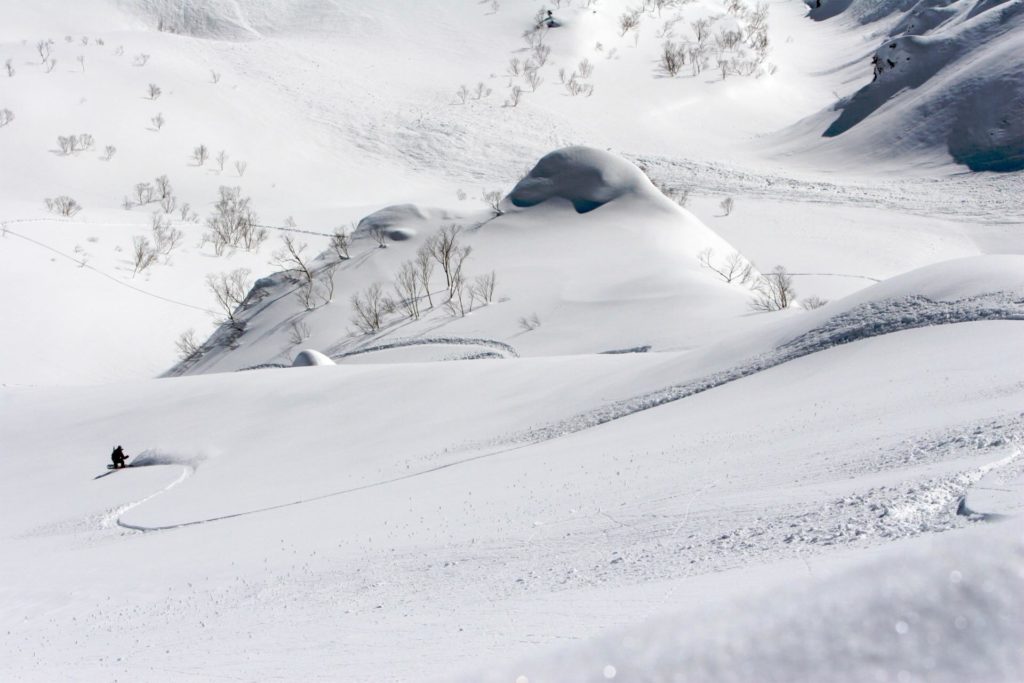My name is Dave Enright and I am a self-admitted “Granola Cruncher.”

Solitude, purity, spirituality are words often associated with Zen meditation, but I could also use them to describe backcountry ski touring. I’d even go as far to say each endeavor, in its own way, is a path to Nirvana, that place of elation, ecstasy and perfection we all strive to reach.
Reaching a heightened state of awareness is no simple task; it takes time, energy and dedication. Yet, in this world of instant gratification, people are always looking for shortcuts. Some turn to manmade machines to get short-lived glimpses of “powder heaven.” This, however, is not the way of the master. It’s just the quick fix. With great effort comes great understanding. To truly experience Nirvana on the mountain, you have to earn your turns.
‘Free’ Skiing
Since the early Scandinavians first strapped skis to their feet, humans have used these contraptions to explore alpine regions and, through that exploration, they found freedom. People still search for freedom today through snow sports. Freedom from our hectic daily routines or work, or the physical freedom we feel through skiing and snowboarding.
For most backcountry enthusiasts, the climb is as important as the descent. It is during the climb when we gather important information from the mountains and use those observations to aid our safe travel in the winter backcountry. With this comes the security in the knowledge we can climb any mountain and slide back down again.
The climb is our time to slow down, connect with friends and the surroundings. It’s a time to enjoy the pristine beauty of winter mountains and discover our inner-self. The climb essentially is our meditation. The feeling of joy and self-satisfaction when reaching the peak of your mountain is not easy to describe, but those who put in the time and effort know it well.

Tsugaike Backcountry
Skiing in the Tsugaike area began in the early 1930s on touring skis. There were a handful of locals who had caught the ski bug and started hiking into the Otari Onsen and Tsugaike Kogen Natural Park areas of Otari, the village neighboring Hakuba to the north.
This area is still popular today with skiers and snowboarders looking for more than the lift access the resort has to offer. The sub-alpine and alpine areas above the ski resort offer easy access from the top of the lifts to expansive terrain for off-piste skiing not overly committing.

These areas, however, are outside the controlled slopes of the ski area boundaries, and therefore proper training and equipment are required for a safe and memorable backcountry experience.
It is always a good idea to hire a guide if you are not familiar with the area or if there is any doubt in your mind about your abilities outside the resort boundaries. There are plenty of guiding companies in Hakuba and Otari that know the Tsugaike area well and have regular scheduled trips there.
Why We Tour
The main reason people tour in winter is to get away from the crowds and, of course, the prospect of great turns. There is nothing better than setting out with a few good friends on a bluebird day with 30 cm. of fresh powder blanketing a relatively stable alpine landscape. These are the days on the mountain we never forget.
If you are only interested in getting in turns, you may have more interest in mechanized skiing such as heli, cat or riding the lifts as you will no doubt get more runs. And if the thought of “skinning” or “shoeing” up the hill does not sound like something you want to do, backcountry touring may not be your cup of tea.

I have had some great days heli skiing, some of the best turns of my life in fact, but the connection to the landscape, tranquility and self-satisfaction are not there for me. It’s the meditative quality of ski touring that keeps me going into the mountains in search of great turns, beautiful vistas and granola crunching grins.
Peace through powder.




